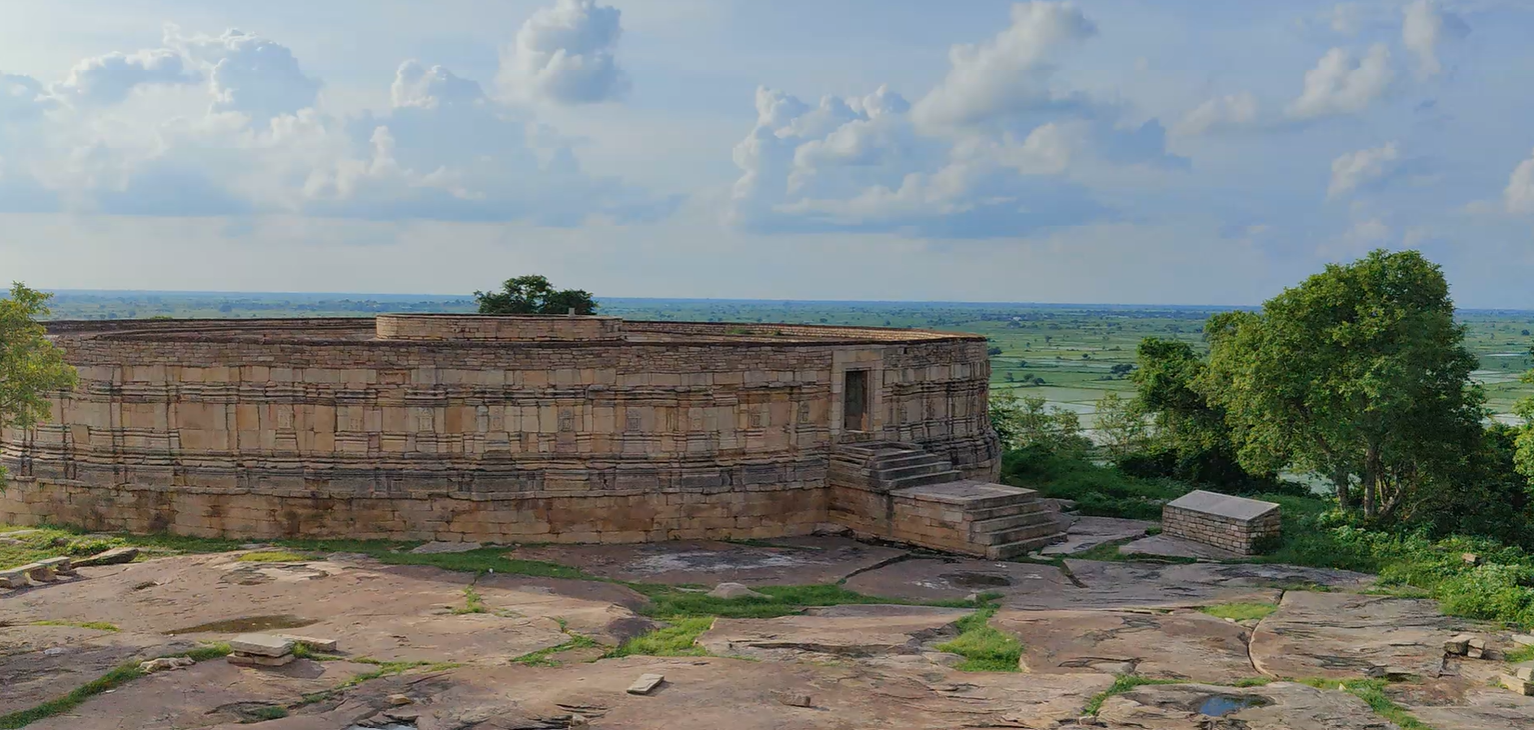Chausath Yogini Temple, Morena
The Chausath Yogini Temple, Mitaoli is an 11th-century temple in Morena district in the state of Madhya Pradesh. Built during Kachchhapaghata reign, it is one of the well-preserved Yogini temples in India. The temple is formed by a circular wall with 65 chambers, apparently for 64 yoginis and the goddess Devi, and an open mandapa in the centre of a circular courtyard, sacred to Shiva.

The temple is located on a hill about 100 feet (30 m) in height; there are 100 steps to climb up to the entrance. It is circular with a radius of 170 feet (52 m),while inside it has 65 small chambers, each with a mandapa which is open and a facade of pilasters and pillars. The roof of the ring of shrines is flat, as is that of the central shrine to Shiva; the circular courtyard is hypaethral, open to the sky, with an open porch as its entrance. The parliament building of India is said to have been based on this temple.
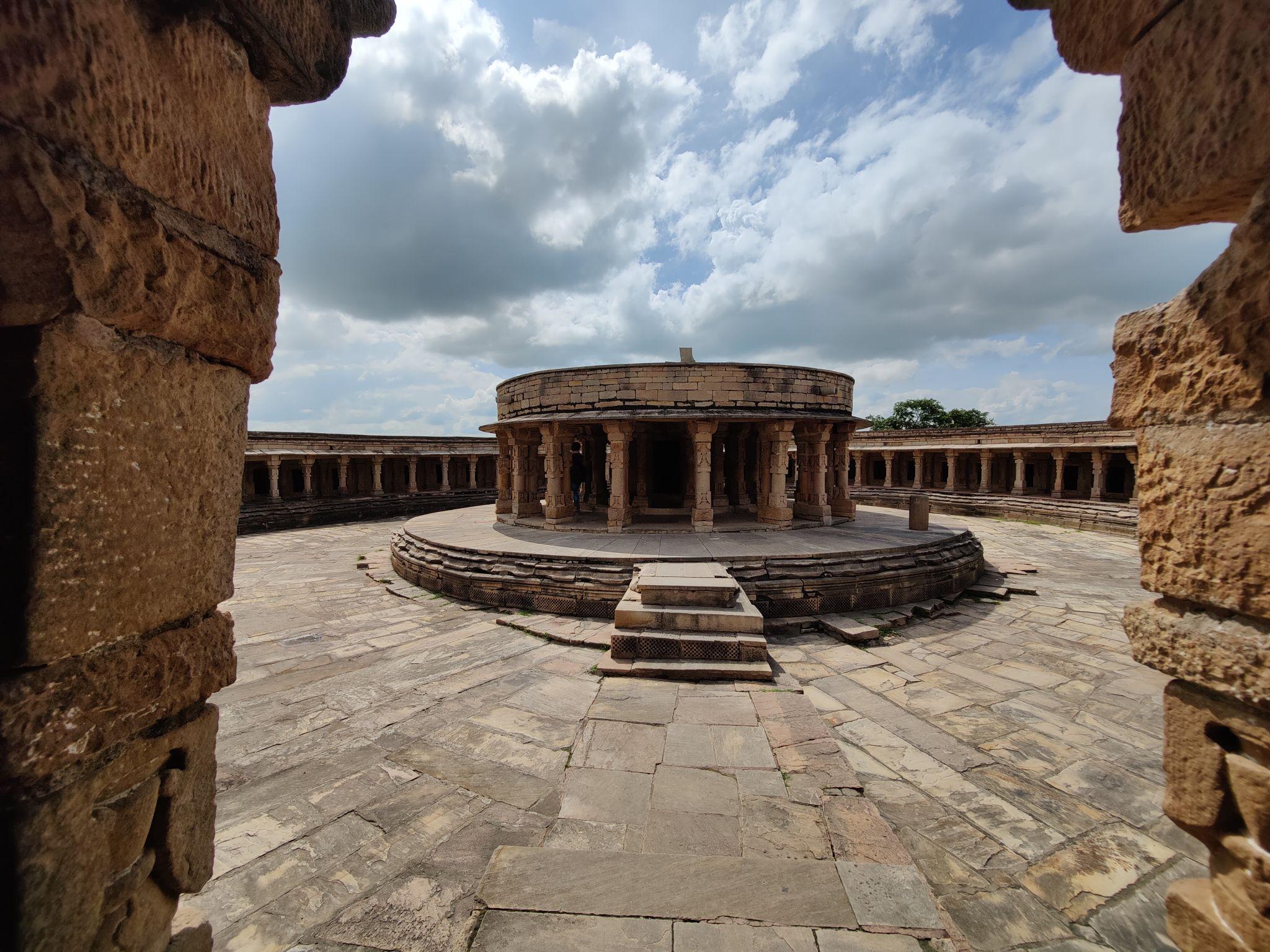

The entrance of the main structure looks something like this. The picture on the left is the eye level view when one enters the temple through the small entrance shown as in the picture on the right. There is a single opening in the circular structure and it consists of a wooden door affixed at the gate.

Upon entering it can be seen that it is externally circular in shape with a radius of 170 feet and within its interior part it has 65 small chambers. The outer circle represents the presence of the 65 yoginis out of which 64 are shivlings and the remaining one is of Devi. The inner shrine is also completely circular in structure, all the stone slabs are rectangular in shapes but placed in such a manner that it ultimately appears to be circular.



The 64 chambers look something like this, and most of them are of this structure. These look very identical in appearance, there is also a mention of serial nos. with a chalk probably done by a local or caretaker.


This particular chamber is present at the half of the sphere, and interestingly appears right behind the central shrine. Its design is different from the rest of the chambers but the structure is of exact size, the pillar if noticed has many small engravings designed, this is not found in other chambers. The structures are also broken, probably during the foreign invasions.


The pillars of this temple represent royal elements and their designs, with such pure majesticity it truly brings us back to the 11th century architecture. The structure is purely made of stone and engraved in such a manner that it holds the eye of the viewer.

Within the main central shrine there are slab coverings which have perforations in them to drain rainwater to a large underground storage. The pipe lines from the roof leading the rain water to the storage are also visible.
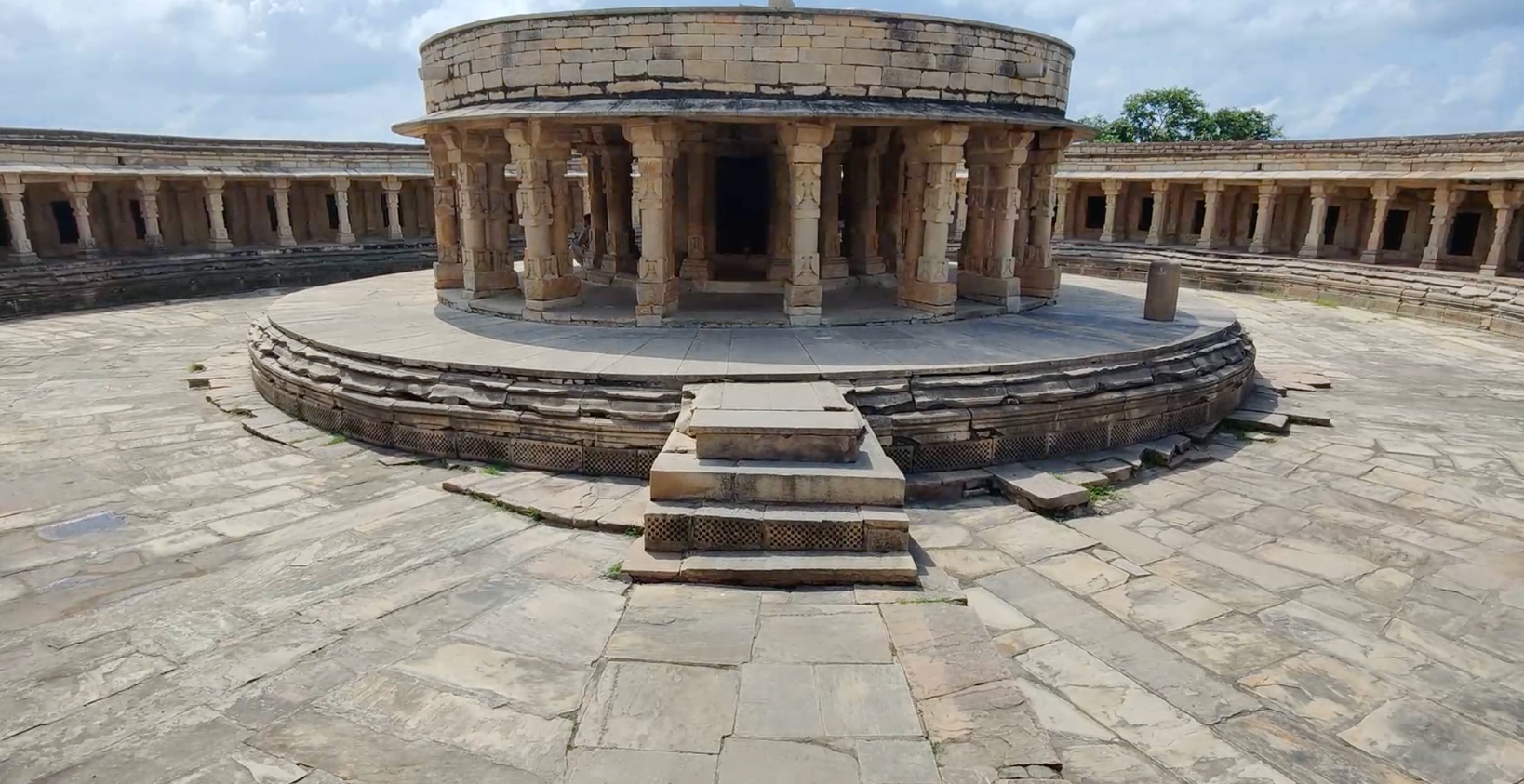
This shrine is present exactly at the centre of the whole structure and is magnificently standing, there is a pair of stairs to reach the height of the raised structure. It only holds one main shrine with a wooden door, and is enclosed. According to experts and researchers the main garbhagriha should have been open to the sky but it was seen to be enclosed with a stone slab from the top.


Interestingly at the inner circle there is a shivling exposed open on the raised platform, though it has some cracks at the bottom, this outstands all other shivlings present in this temple, as it appears to be the biggest in size, and also the peculiar location of it makes it more intriguing. On entering the inner circle it appears to be on the right side.

The main shrine of the temple appears to be inside this main chamber on the inner circle.
There are two shivlings present inside and a raised plinth behind them, the interior is of plain stone slab and does not have any engravings as such.
On the entrance there a wooden door opens into this enclosed chamber, and on the border walls there seems to be something written on ancient texts, but due to rapid changes of weather and many invasions the text appears partial.
It is believed that only a main poojari or a couple enters this shrine and performs the rituals, the size restricts many people from entering together.
Also there should not have been any enclosing from top of this chamber but supposedly the ASI body had kept it that way.


At the hilltop the temple structure appears to be circular, and a raised plinth with a staircase provides the entrance and exit of the temple as one. It is designed in such a way that no one can go behind the structure neither from left nor from right as it stands at the top of the hill.
Before the entrance there is wide space and at a distance of around 20 metres there is another structure present with a raised platform.
The design of the temple has withstood earthquake shocks, without any damage to its circular structural features, in the past several centuries. The temple is in the Seismic Zone III.
Many of these curious visitors have compared this temple with the Indian parliament building (Sansad Bhawan) as both are circular in style. Many have drawn conclusions that this temple was the inspiration behind the Sansad Bhawan.

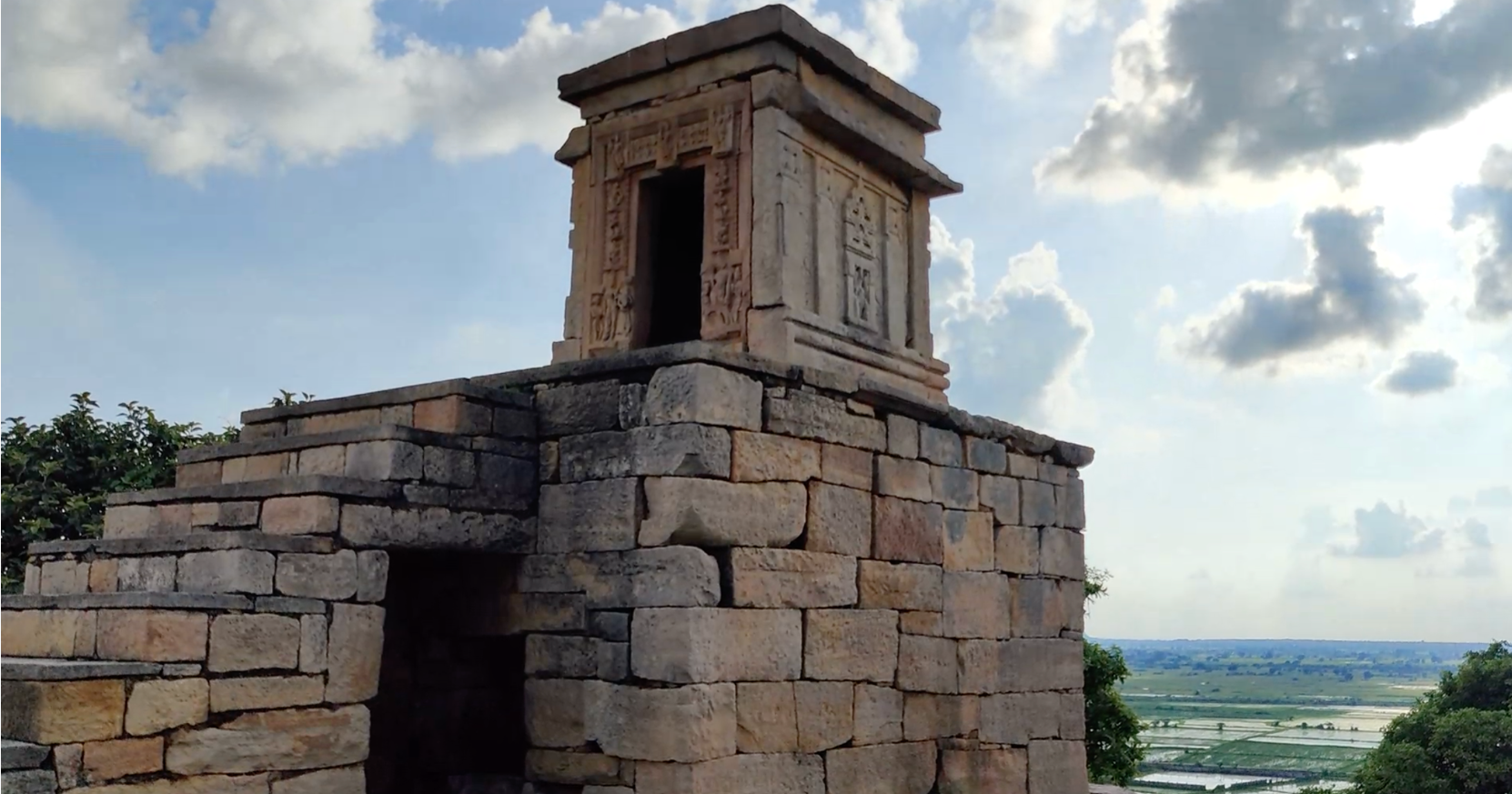
The distant structure appears like this, the main circular structure appears behind the raised platform. Thus is a west facing shrine and on the inside it appears to be empty.

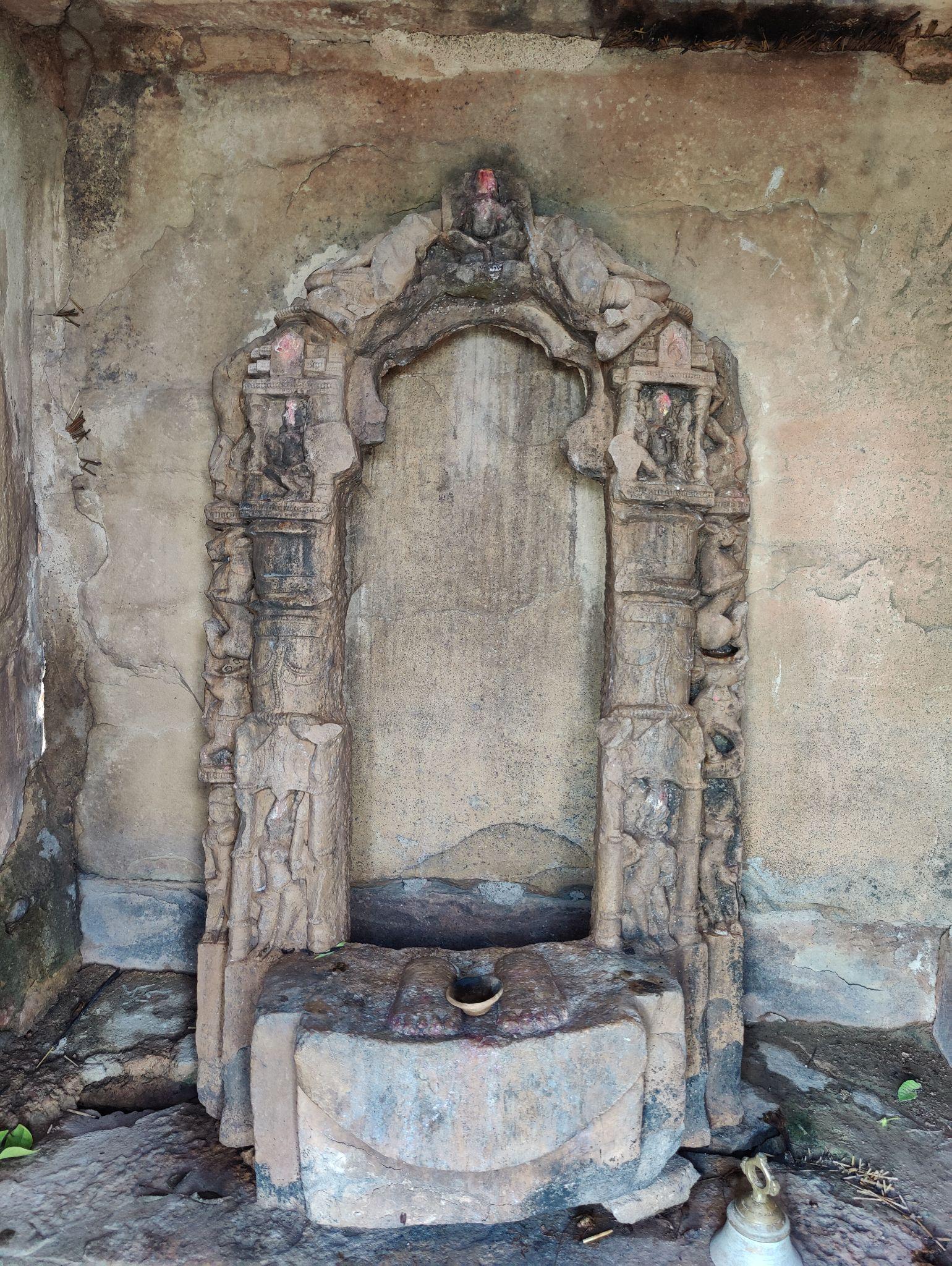
The missing deity with ornaments is believed to be present in the ASI museum of Gwalior.
On noticing the doorway of this structure is presented with many small stone cuttings designed beautifully, it appears to be eye pleasing but on the inside as it appears to be empty there is no ritual performed. But the raised structure does not have any boundary or support as it is raised to a certain height and when on top of it certain precautions are to be taken.

The temple at evening has a magnificent view and it just takes away the senses, the beauty of it and the presence of the natural elements and its location all completely serves the purpose of such a powerful temple.
Though the architecture of the temple appears to be unique, its making serves a greater purpose and not everyone can understand the rituals this temple is capable of.

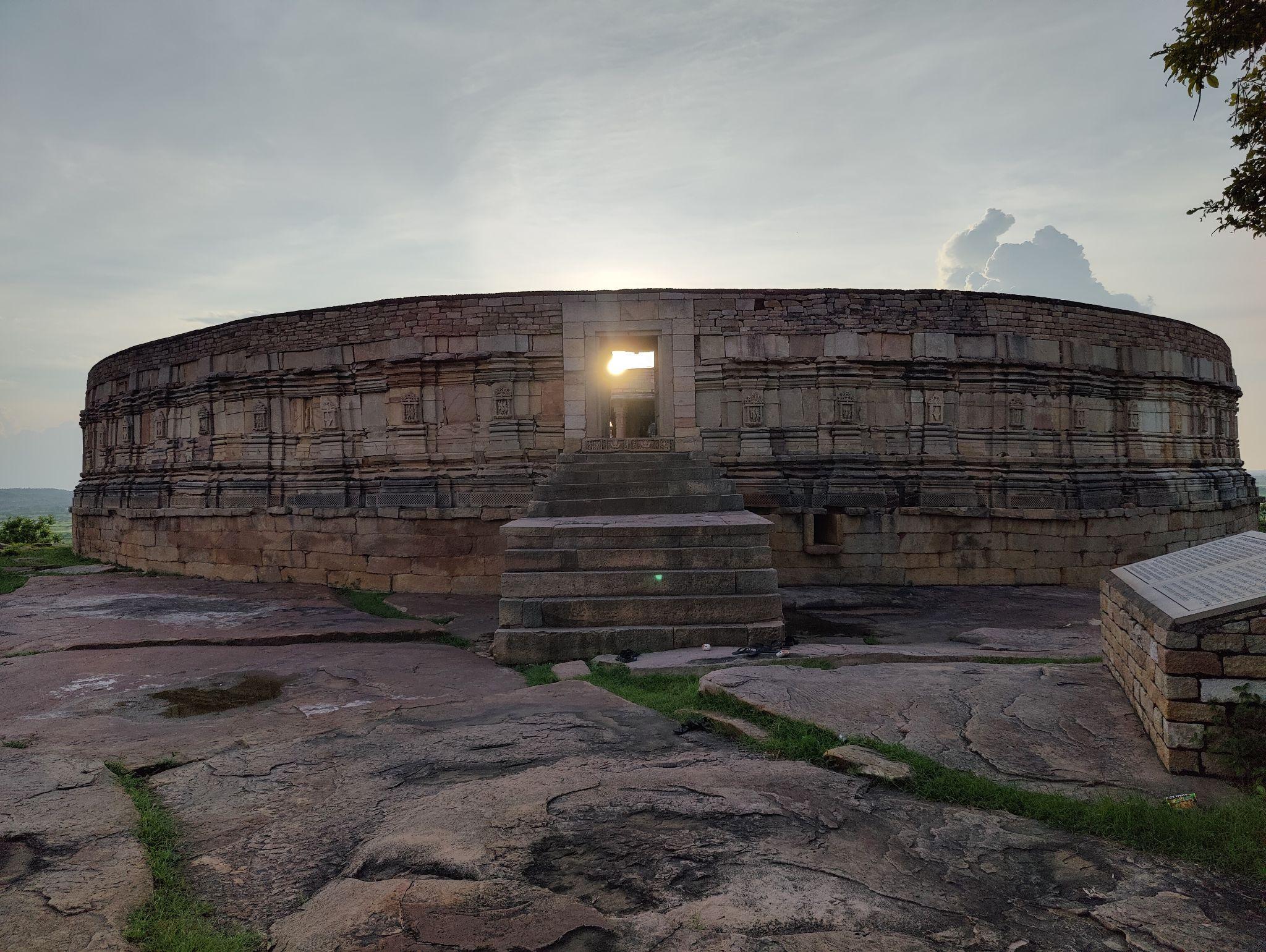 The temple has a great scenic beauty from its hilltop.
The temple has a great scenic beauty from its hilltop.
There were no evident caretakers or pandits in the temple, a watchman is seen at the main entrance gate of the hill, the gates close to entry at 5 pm. There are also some lights installed by ASI, but they do not light it up. There is also a local shop opposite the main gate of the temple.

